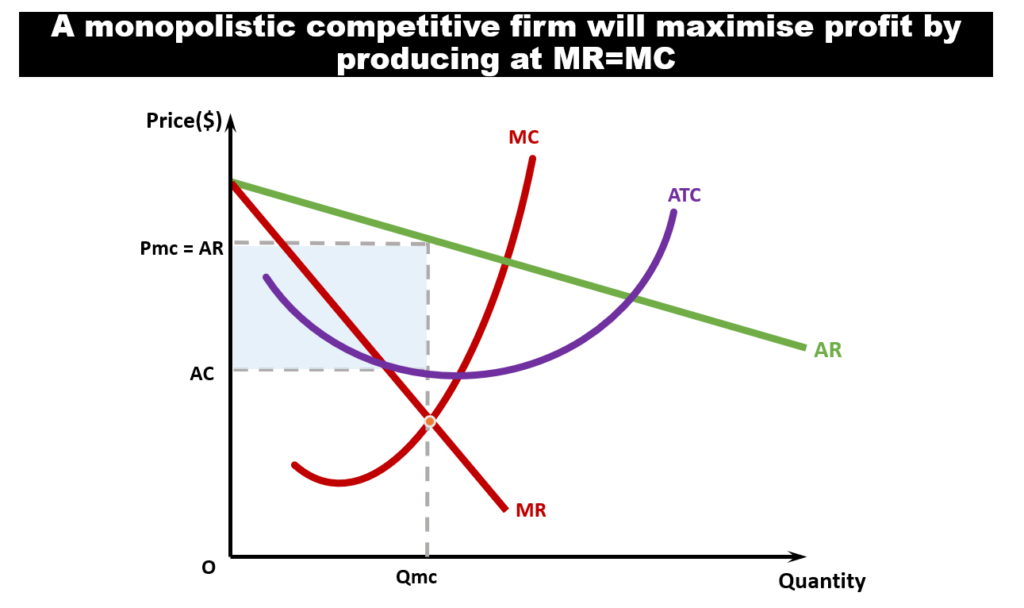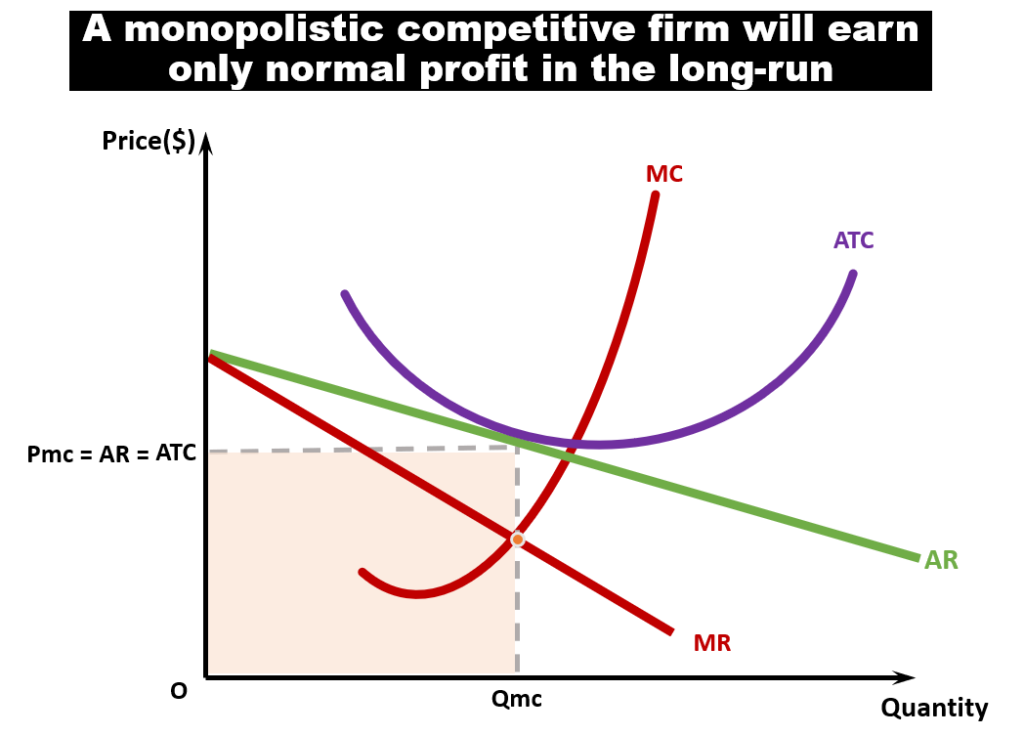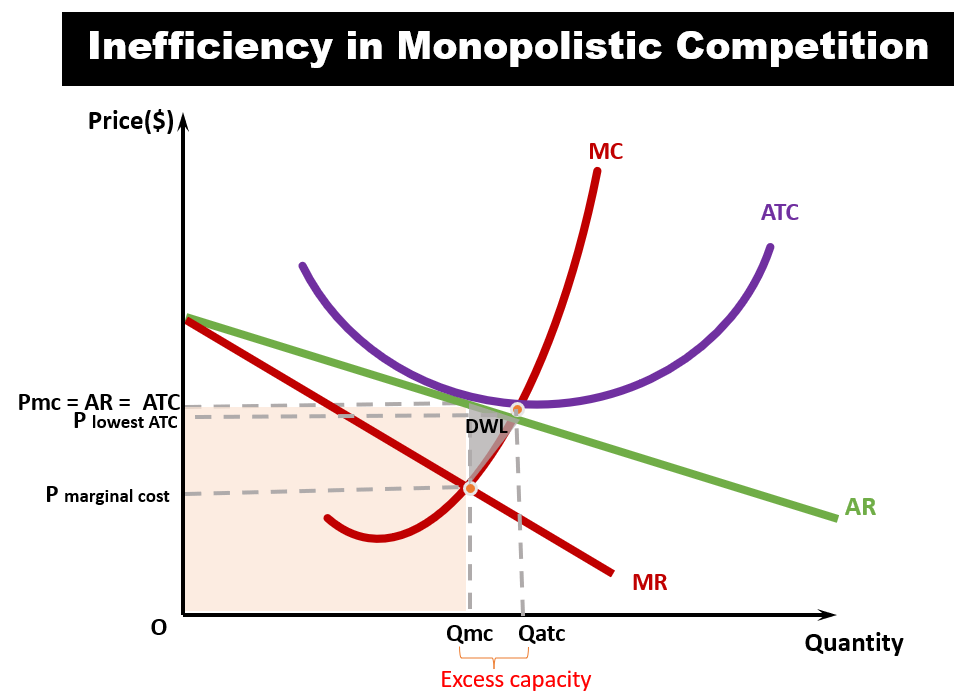Monopolistic Competition
Monopolistic Competition Overview
Monopolistic competition describes a market structure where there are many companies offering competing products or services that are similar, but not perfect, substitutes. It is a hybrid between perfect competition and monopoly. In this section, we shall look at the monopolistic competition graph and its demand curve. We shall also discuss the monopolistic competition efficiency, or lack thereof.
Characteristics of Monopolistic Competition
#1 Relatively Large Number of Firms
- There are many sellers in the market, but not as many as that in perfect competition.
- Strong competition amongst many firms result in lack of power to influence prices.
- There are many consumers for the products in the market.
#2 Differentiated Products
- The products offered by different producers share many similar features.
- However, the goods do have some degree of product differentiation — e.g. product features, service, marketing
#3 Easy Entry and Exit
- Few barriers to entry, hence new firms can enter market in long run to compete.
Understanding the demand curve of a firm under monopolistic competition
- The characteristics of monopolistic competition is a cross between perfect competition and monopoly. Hence like a monopoly, its demand curve is downward sloping. However, due to many similar substitutes available to consumers, the demand is fairly elastic.
- A firm under monopolistic competition produces the quantity of product (Qmc) that can enable it to reach the profit maximization level where its marginal revenue is equal to its marginal cost i.e. MR=MC.
- Based on that optimal output (Qmc), the firm then charges the price (Pmc) based on its demand curve.
The monopolistic competitive firm can earn supernormal profit in the short-run
In the short-run, it is possible for a firm under monopolistic competition to make supernormal profit.
If the price (Pmc) that is set at output (Qmc) based on the profit maximization level MR=MC is higher than its average total cost, then it is possible for it to earn supernormal profit. This is as shown in the blue rectangular area in the diagram.

The monopolistic competitive firm can only earn normal profit in the long-run

Both supernormal profit and subnormal profit are possible for a firm under monopolistic competition. However, these scenarios are transient.
In the long-run, due to ease of entry and exit in the monopolistic competitive industry, the supernormal profit and subnormal profit will disappear.
The presence of supernormal will attract new firms, while the subnormal profit will entice firms to leave the industry.
Graphically, entry (and exit) stops when profits are zero and at price equals its average total cost (i.e. Pmc=ATC), or when demand curve is tangent to ATC.
There are inefficiencies under monopolistic competition
- No productive efficiency — A monopolistic competitive firm produces at price Pmc, and that is higher than the minimum ATC. i.e. Pmc > P lowest ATC.
- No allocative efficiency — At profit maximization output (Qmc), the price is at Pmc. This is much higher than the marginal cost (i.e. Pmc > P marginal cost). Hence, it is not allocatively efficient.
- There is dead-weight loss (DWL), but its size is much less than the monopoly situation.
- Excess capacity — Since less than less product as compared to that of lowest ATC is produced, there is hence excess capacity (given by Qatc – Qmc).

